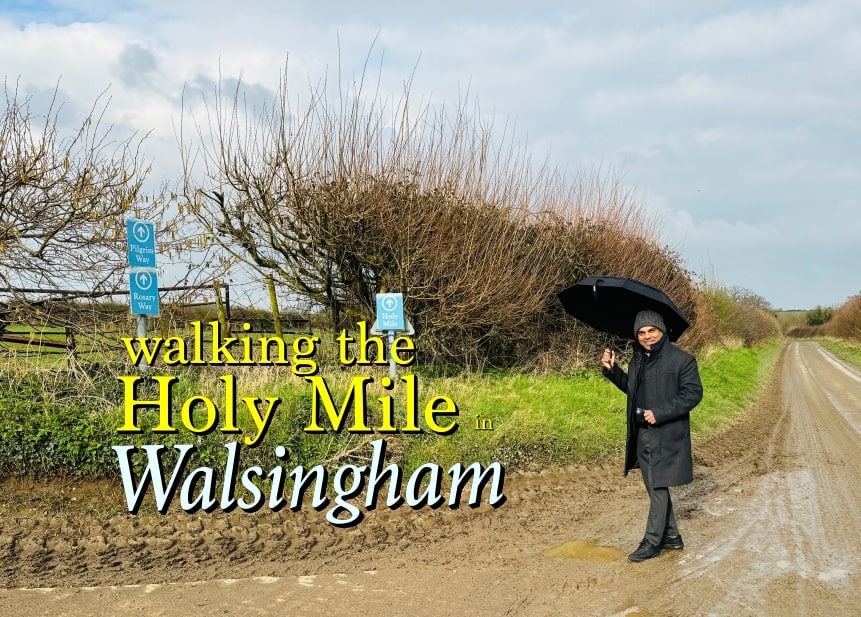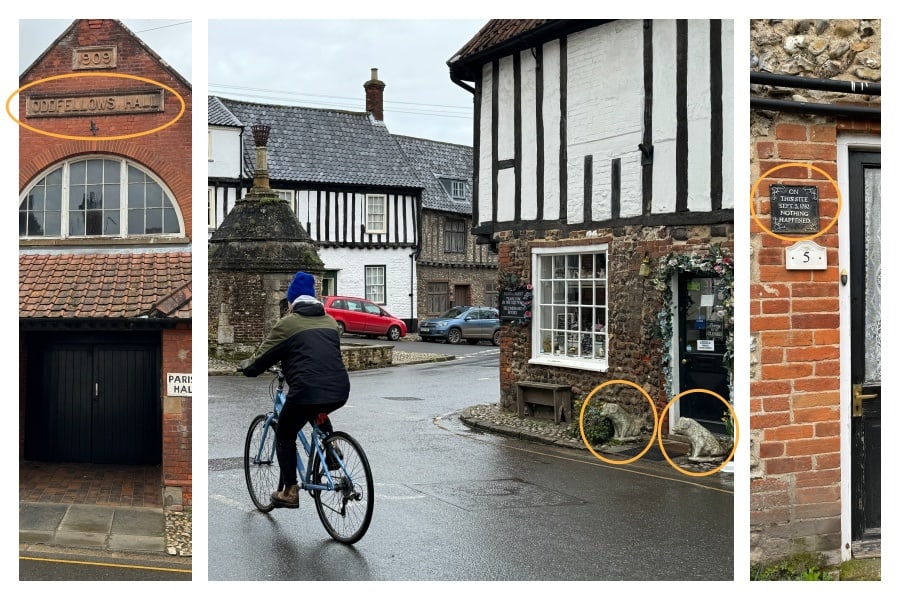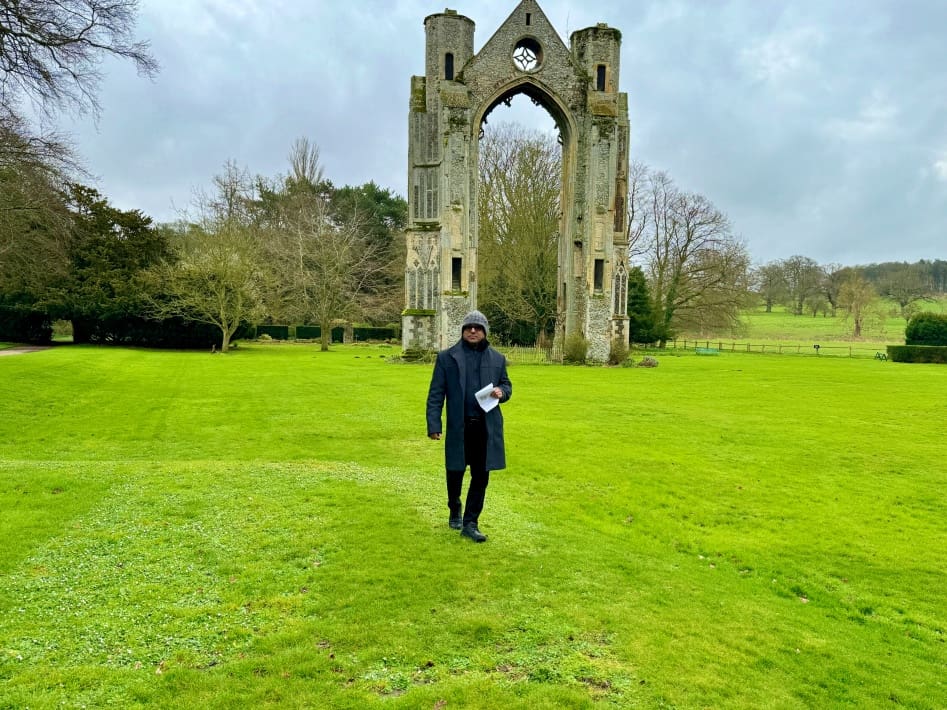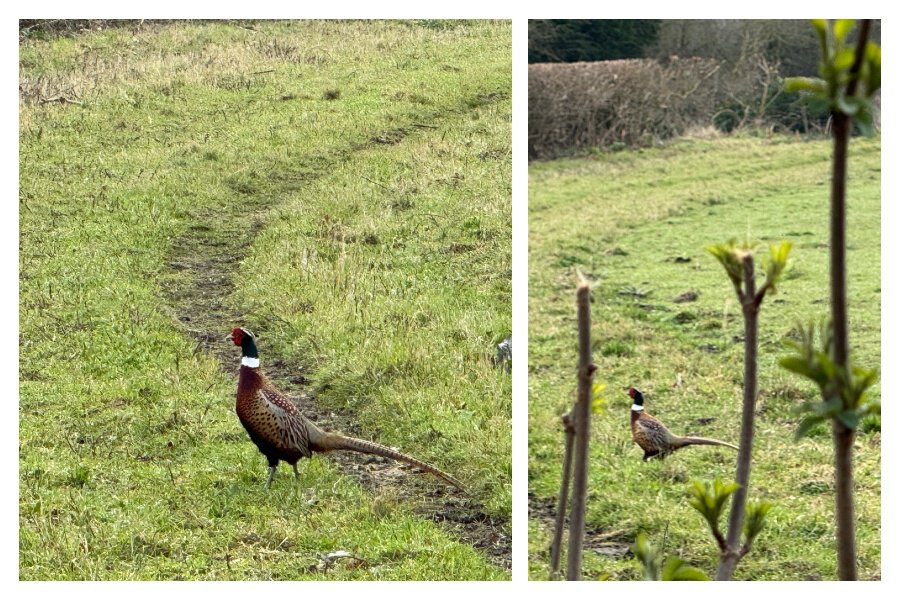
I notice rare things in holy places. I did so at Walsingham, a famous pilgrimage site in England. It looked like two miniature statues of pigs guarding the house’s front door near the common place junction in little Walsingham. I walked down the high street and noticed an “Oddfellow Hall” tiled onto the façade of a Medieval English House. And then, again, just before stepping into St. Mary’s Church, a plaque on the side of the front door stating, “On This Site Sept. 5, 1782 NOTHING HAPPENED.”
How do we make sense of such signs?
Walsingham witnesses a 1000 years of history of holiness, horror and honour. I am not giving a history lecture on it. It made me giggle as I noticed the pigs – it was odd. I had seen symbols of dogs, horses, lions, birds, etc., not pigs. It may be a pride of the local farms – the ham. More information is welcome.
But the Oddfellow Hall? I thought to myself. Every parish should have one such hall welcoming people whom we find odd. I read a book recently, Surrounded by Idiots, with a basic assumption that I can be an idiot to someone else. As a church, we need to create unstructured space for people who appear odd. I later read that Odd Fellows is a religiously and politically independent fraternity of people embracing everyone. It is an unexplored facet of the Catholic Church. As we prepare for the Synod of Bishops in October 2024, in a little way, let us create a place to welcome people who fail to fit into our frame of reference. The odd fellows are also pilgrims in Walsingham.

The plaque is widespread – and is in many places. It can be an outright denial of something significant happening – or a statement. It is a pilgrimage site, miracles abound, and prayers are answered. But what about those who do not experience a joyful sense of the divine in these places? How can we connect with them? How do we interact with those who deny spiritual and religious piety?
Sometimes, the quintessential eludes the reality of the minority.
Walking the Holy Mile toward the Holy House.
I joined a priests’ retreat led by Bishop Emeritus Michael G Campbell OSA Lancaster lead a retreat from March 4-8, 2024, at the Catholic National Shrine of the Our Lady at Walsingham. Bishop Michael focused the retreat talks on “The Priest, the Servant of the Lord” regarding the Servant Songs of Isaiah. The servant songs rarely appear in the liturgical readings during the year, except on Good Friday. “It is read with solemnity in silence,” Bishop Campbell said.
It was an excellent opportunity to be in the Holy place. There was ample time for silence, reflection, and being like a pilgrim. The Holy Mile begins from the Slippers Chapel and ends at the site of the Holy House, the ruins of the Augustinian Monastery founded in 1153. The monastery is also referred to as the Abbey grounds. The Holy House is a replica of the House of the Holy Family in Nazareth, which was built adjacent to the monastery by a noble lady, Richeldis de Faverches, based on her vision in 1061.

Everything is holy in a pilgrimage site. The two Holy Wells existed before the Holy House. A small bathing pool was built for the pilgrims on the site, like the one earlier present in Lourdes. The water is not in use now. I am tempted to drink it one day.
It was a quiet afternoon. I set out to walk the holy mile – choosing the pilgrim’s route rather than the road. “Walsingham refuses to die,” Bishop Michael said in his concluding retreat talk. It’s like God refuses to let us get crushed. God lifts us up each time, always with the assurance of his mercy.
Random Reflection on Walsingham
Lady Richelds, a young widow, desired to keep alive the joy of the Annunciation. The story begins with immense suffering, which moves towards hope through the vision of building the Holy House in England. Hundreds of thousands of pilgrims have visited Walsingham for over 1,000 years. It’s a story of hope, horror, and healing.
Brutal persecution and destruction disrupt the story of hope, with restoration efforts evoking the solemnity of religious piety. As pilgrims, we often begin with good intentions. But we are crushed by challenging scenarios and life situations. The faithful pilgrims are eventually lifted by the hand of God, restored, and healed. Here, the pilgrim becomes a saint and an example of holiness. Walsingham remains a beacon of hope for the odd ones, the faithful and the opposition to hope for a better world- as gracious people of a loving God.
Walsingham is my story and yours – we wish some things never happened. In the prayers said at the holy sites, there are petitions to forgive those who destroyed the Holy House.
Who destroyed your Holy house? Can you lift a prayer of forgiveness to them?
It is grace that abounds always. Let the God of mercy listen to the prayer of a pilgrim. Our Lady of Walsingham, Pray for us.
 I need to catch up on the birds in the lush green sanctuary of nature at Walsingham. The song of the birds displays deep wells of sorrow. Their beauty is in their struggle to survive the winter, announcing spring’s joy and a summer celebration. Yes, I did manage to capture the photo of the fantastic Pheasant bird, the pride of Walsingham, Norfolk. Like the birds, we survive the fall and winter, build in the spring and celebrate the summer – a lenten journey for every pilgrim.
I need to catch up on the birds in the lush green sanctuary of nature at Walsingham. The song of the birds displays deep wells of sorrow. Their beauty is in their struggle to survive the winter, announcing spring’s joy and a summer celebration. Yes, I did manage to capture the photo of the fantastic Pheasant bird, the pride of Walsingham, Norfolk. Like the birds, we survive the fall and winter, build in the spring and celebrate the summer – a lenten journey for every pilgrim.
#Walsingham #Pilgrimage #Hope #Forgiveness #GracefulJourney
About the Author
Feroz Fernandes, a Catholic Missionary, identifies himself as an Uncommon Priest. Father Feroz loves adventure in the apostolate. Check out his debut book, The Uncommon Priest: Incredible Stories You Never Read. Also, the YouTube Channel Feroz Fernandes promotes a better understanding of scripture.
Have you enjoyed reading? If so, add your email in the SUBSCRIBE section, and I will email you the weekly new write-ups.
Thank you for sharing this adventure with us . Our prayers are with you always.